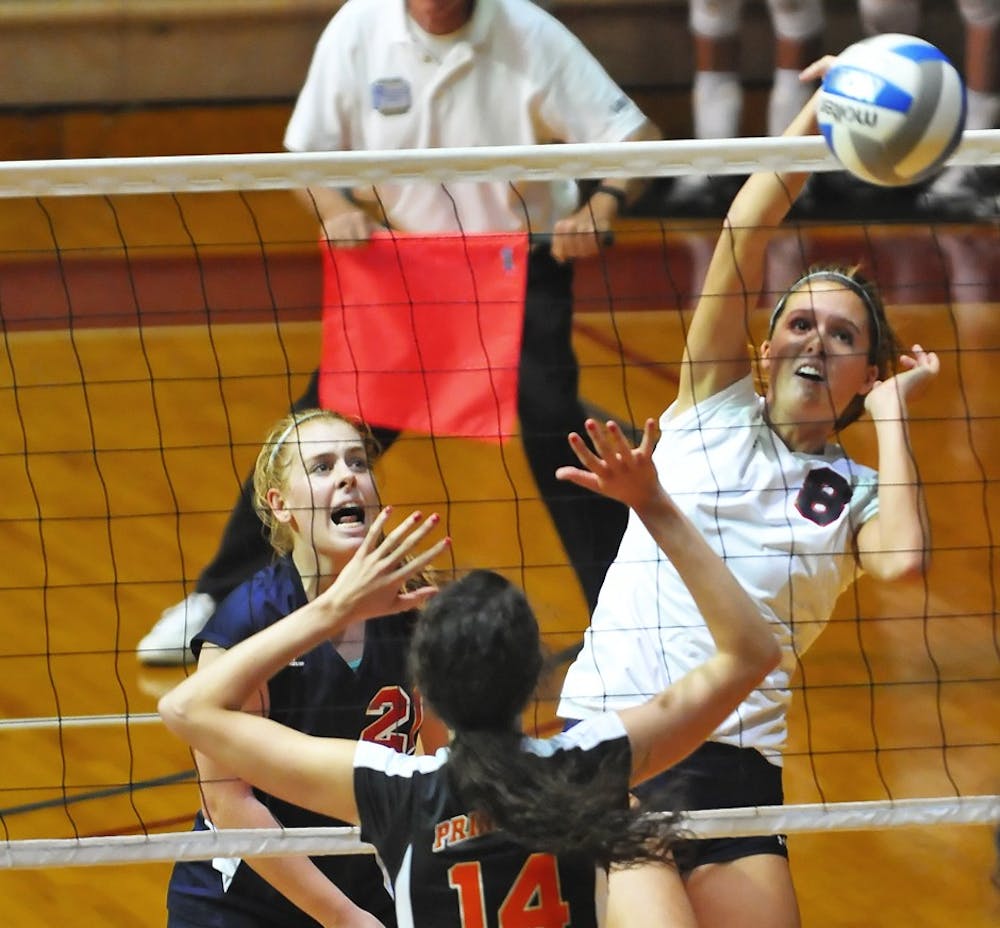
On the surface, it may be unclear why the Penn volleyball team would move away from an offense that won two-straight Ivy championships.
Coach Kerry Carr and her staff have gone back and forth since the end of Ivy play last season debating the issue, and — after hours of experimentation in practice and studying of actual gameplay during this early season — the coaching staff decided that an offensive shift was necessary.
Why? The Quakers simply don’t have the necessary personnel to continue running the “5-1” rotation.
A 5-1 offense utilizes one main setter and five attackers. The setter rotates to all six positions and must not only be able to set, but also hit and defend well.
Among the benefits of a 5-1 are the inevitable synergy between the various hitters and a sole setter, the elimination of the need for an extra setter — a highly specialized position — and a stronger defense than the 6-2 scheme, which the Red and Blue have decided to shift to.
The 5-1 calls for highly specialized players, and the Quakers of old were a specialized team to say the least. They had a core group of players who knew their exact roles and how to play them well.
But with the departure of quintessential setter Megan Tryon and outside hitter Julia Swanson — the two players who highlighted the 5-1 offense that won the Quakers back-to-back Ivy championships — the offense simply could not be as effective as it had been in the past.
Tryon single-handedly controlled Penn’s potent offense from her position as setter, and her ability resulted in a Red and Blue victory more often than not.
However, with her graduation, Penn has been forced to become more “versatile,” according to Carr, who has decided mid-season to permanently move to the more fluid 6-2 rotation.
The 6-2 set features a rotation of six hitters and two setters with players constantly subbing in and out of the game.
Increased substitutions, however, can sometimes pose problems with the NCAA’s 12-substitution limit. If Carr reaches that limit in a close contest, Penn would switch back to a 5-1 scheme.
“You still need to have both offenses and practice them just in case you do run out of subs in the end game,” she said.
In most cases, substitutions will not be an issue, and Carr can fully utilize the 6-2 offense, which complements Penn’s current roster of well-rounded, non-specialized players.
“It’s fun as a coach to fiddle around with [offensive sets] with a team that’s strong all the way across,” Carr said. “People can play different positions, which gives me a lot versatility against the different types of teams we play.”
Yet Carr also admitted there are drawbacks to the new system.
“With two different setters, there are two different setting styles,” she explained. “The middle [hitter] gets two different setters on them and so it’s hard to find that connection.”
While middle hitters like junior Amanda Pacheco must adjust to two different setters, there are always three front hitters available in the 6-2, according to Carr.
Sacrificing defense in the name of stronger offense has proved some trouble for Penn, but it has responded relatively well up to this point. However, the offensive switch has been the cause of some early season lapses.
“Unfortunately at times, [the new offense] is a little unstable, and we’ll lose to a team like William & Mary,” Carr said. “We’re still struggling to find another rightside hitter besides Lauren Martin to give us some offense and blocking.”
In any event, Carr is confident with how her team is handling the new offense.
“We’re right on track for peaking when we reach the Ivy League opponents,” she said.
The Quakers will soon find out whether that’s true or not, as they open Ivy play Friday at Princeton.
The Daily Pennsylvanian is an independent, student-run newspaper. Please consider making a donation to support the coverage that shapes the University. Your generosity ensures a future of strong journalism at Penn.
DonatePlease note All comments are eligible for publication in The Daily Pennsylvanian.





